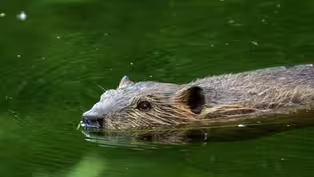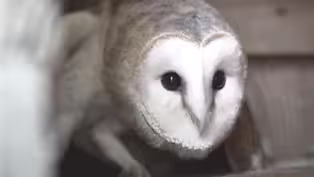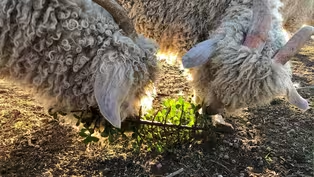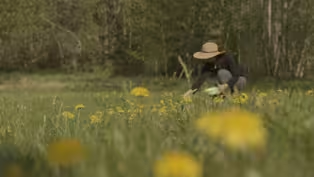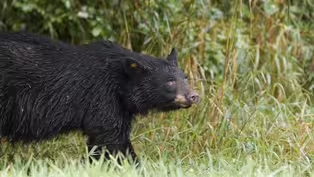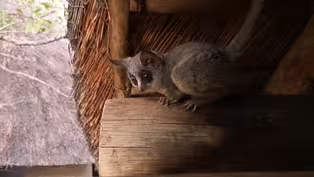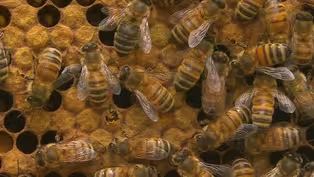
Mythbusting Opossum Facts | Backyard Nature
Special | 3m 1sVideo has Closed Captions
Explore the myths and misconceptions surrounding the widely misunderstood opossum.
What's the difference between an opossum and a possum? Are opossums really disease-driven? Explore the myths and misconceptions about the misunderstood opossum with wildlife filmmaker Alex Goetz.
Problems playing video? | Closed Captioning Feedback
Problems playing video? | Closed Captioning Feedback
Major support for NATURE is provided by The Arnhold Family in memory of Henry and Clarisse Arnhold, Sue and Edgar Wachenheim III, The Fairweather Foundation, Charles Rosenblum, Kathy Chiao and...

Mythbusting Opossum Facts | Backyard Nature
Special | 3m 1sVideo has Closed Captions
What's the difference between an opossum and a possum? Are opossums really disease-driven? Explore the myths and misconceptions about the misunderstood opossum with wildlife filmmaker Alex Goetz.
Problems playing video? | Closed Captioning Feedback
How to Watch Nature
Nature is available to stream on pbs.org and the free PBS App, available on iPhone, Apple TV, Android TV, Android smartphones, Amazon Fire TV, Amazon Fire Tablet, Roku, Samsung Smart TV, and Vizio.
Buy Now
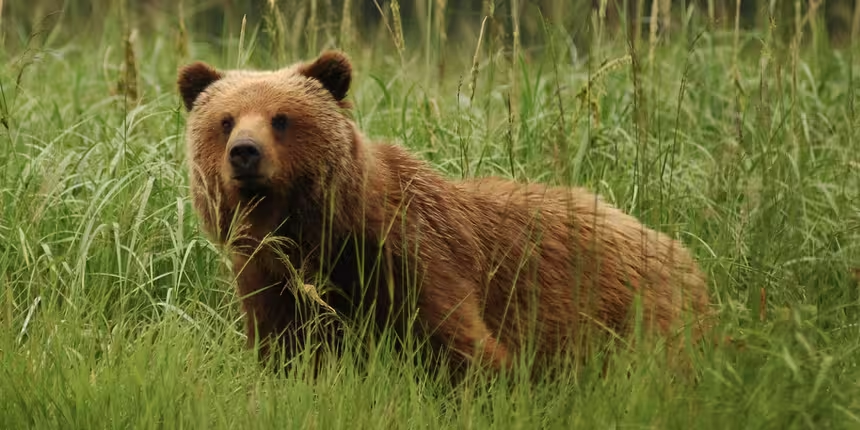
Explore More Ways to Watch
Bring the beauty and wonders of wildlife and natural history into your home with classic NATURE episodes.Providing Support for PBS.org
Learn Moreabout PBS online sponsorshipMore from This Collection
Tag along with filmmakers as they share the beauty of nature while social distancing. Studies show that immersing yourself in nature can benefit your health, so watch the videos below to connect with and appreciate nature.
Busy Beavers | Backyard Nature
Video has Closed Captions
Cinematographer Jeff Hogan takes you into his own backyard to meet his favorite creature. (4m 5s)
The Orphan Owl | Backyard Nature
Video has Closed Captions
Wildlife Filmmaker Ana Salceda made an unlikely companion during the coronavirus pandemic. (8m 12s)
The Miracle Plant | Backyard Nature
Video has Closed Captions
This miracle plant helps combat climate change and tastes good in ice cream. (4m 21s)
Video has Closed Captions
Learn how to make dandelion and cat ear tempura with wildlife filmmaker Nim Pontecorvo. (3m 7s)
Caught On Camera | Backyard Nature
Video has Closed Captions
Join wildlife filmmaker Joe Pontecorvo as he views footage from his backyard trail camera. (3m 40s)
Bush Baby Tenants| Backyard Nature
Video has Closed Captions
You think your upstairs neighbors are noisy? You haven't met bush babies. (3m 43s)
Keep Calm and... Tend to 20,000 Bees | Backyard Nature
Video has Closed Captions
Immerse yourself in nature with these spring videos. (4m 46s)
Providing Support for PBS.org
Learn Moreabout PBS online sponsorshipHi, my name is Alex Goetz and I'm a wildlife filmmaker and photographer.
When I'm not on location, I live here in, Northwest Ohio.
I'm fortunate to be just a short drive away from a globally rare ecosystem called the Oak Openings Region.
The Oak Openings Region is an amazing place that not only has these massive oak trees and oak savannas, beautiful wildflower prairies, but swamps too.
The Oak Openings Region is home to many unique species of plants and animals.
But today, we're looking for one particularly, misunderstood one and a personal favorite of mine, that can be found wandering throughout this region, as well as backyards and suburbs and cities.
Today, we're looking for the opossum.
Opossums have a bit of a bad reputation.
Fueled by some common misconceptions out there, I want to explore some of these myths and misconceptions with you and figure out what is fact or fiction.
First, let's clear probably, the biggest misconception out there before we dive too deep into others.
Is it opossum or possum?
While those are both animals with pouches, they're actually two different animals.
Opossums are the fuzzy white animal that roams around here in North America.
But possums without the O, are actually an Australian species more closely related to the kangaroo.
Opossums should be a welcome neighbor to your backyards.
While a lot of people view this animal as a nuisance, they actually provide some really important ecological benefits to humans.
Opossums are omnivores.
Meaning they will eat anything from plants, fruits, and nuts to bugs, small mammals and even roadkill.
As scavengers, they clean up the environment around them of deceased animals.
One of the best things about them though, they eat ticks, a lot of them too.
It's estimated they will eat around 5,000 a year, which helps cut back on Lyme Disease in the environment.
A lot of people think that opossums are disease-ridden or have rabies.
It's actually really rare for an opossum to get rabies because opossums have a lower body temperature than other mammals here in North America.
Their bodies just aren't suitable habitats for diseases like rabies.
Some people might not think they're the cutest animal roaming through your yards and neighborhoods, but I promise you, they play a very important role in the ecosystem.
Opossums tend to be shy and want nothing to do with people.
So it's easy for people to claim they're mean, rabid or a nuisance when they run into one around their home.
But I hope that dispelling some of these myths and misconceptions of opossums has helped you understand and appreciate your wild neighbors more.

- Science and Nature

Explore scientific discoveries on television's most acclaimed science documentary series.













Support for PBS provided by:
Major support for NATURE is provided by The Arnhold Family in memory of Henry and Clarisse Arnhold, Sue and Edgar Wachenheim III, The Fairweather Foundation, Charles Rosenblum, Kathy Chiao and...
